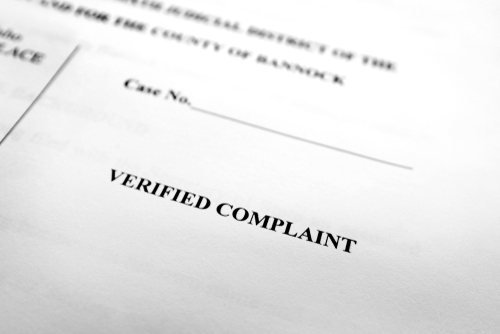Survivors (or parents/guardians of minors) considering a civil case after sexual abuse or assault—whether an individual offender, an institution (school, youth program, religious organization, healthcare setting, camp, sports team), or both. Criminal prosecution is handled by law enforcement and the District Attorney; a civil case is about accountability and compensation for harms like therapy costs, lost income, and pain and suffering.
Step 1: Immediate safety, care, and evidence preservation
- Get medical care and, where appropriate, a forensic exam at a child advocacy center or hospital.
- Preserve digital evidence: screenshots, chat logs, call records, social media handles, device backups, and metadata; don’t delete or alter accounts.
- Save physical evidence in paper bags (not plastic). Keep a simple contemporaneous timeline.
- Consider a protective order. If a minor is involved, notify a trusted pediatrician/therapist and school as safety planning partners.
Step 2: Talk to a trauma-informed attorney (free consultation)
- Most firms offer free, confidential evaluations and contingency fees (you pay only if there’s a recovery).
- Ask about similar cases, approach, resources (investigators/experts), and communication style.
- Urgent deadline check: statutes of limitations (often extended for child victims), government “notice of claim” windows if a public school or agency is involved, and any arbitration clauses or Title IX timelines for campus cases.
- If you feel overwhelmed and want the possibility of being connected to an attorney as soon as possible, skip down to the bottom and fill out the brief, confidential form. Our intake team will then start your case review possible to see if you’re eligible for possible compensation.
Step 3: Pre-suit investigation and strategy
- Your legal team gathers records (police, school/HR, Title IX, CPS), interviews witnesses, and identifies all potentially responsible parties (individual offender, employer, school/daycare, youth program, property owner, event host, rideshare/platform, security contractor).
- Evidence preservation (“litigation holds”) go to institutions and third parties to prevent spoliation.
- Where helpful, counsel may send a demand letter or pursue early mediation.
Step 4: Filing the complaint (starting the civil case)
- The complaint names defendants, states the facts, and alleges claims (e.g., assault/battery, negligence, negligent hiring/supervision, premises liability, Title IX, clergy/therapist malpractice, negligent security).
- Survivors often proceed as Jane/John Doe to protect privacy; counsel can seek protective orders to limit disclosure of medical/therapy records and personal identifiers.
- The court issues a summons; defendants are served and deadlines start.
Step 5: Defendant’s response and early motions
- Defendants file an Answer (admit/deny) or a motion to dismiss.
- Courts may decide early issues (anonymity, scope of discovery, protective orders, arbitration, venue).
Step 6: Discovery (the information-gathering phase)
- Written discovery: Interrogatories, document requests, requests for admission, and third-party subpoenas.
- Depositions: Witnesses, institutional representatives, and experts. Trauma-informed accommodations can minimize re-traumatization (breaks, remote testimony where allowed).
- Experts: Trauma clinicians, institutional-policy experts, security standards, economics/life care planners.
Step 7: Negotiation and mediation
- Many cases resolve in mediation once facts are developed. Settlements can include compensation for therapy, future care, lost wages, pain and suffering, and sometimes policy changes or training commitments from institutions.
- For minors, courts typically review and approve settlements; funds may go into structured annuities or trusts.
Step 8: Pre-trial and trial
- If unresolved, the parties prepare exhibits, witness lists, and motions in limine (a request made by one of the parties in a legal case to the judge before a trial, asking to exclude certain evidence or arguments that could be prejudicial, irrelevant, or inadmissible from being presented to the jury); the court hears the case to verdict.
- Survivors may have rights to privacy accommodations (closed courtroom for certain testimony, support person presence, etc., depending on jurisdiction).
Step 9: After judgment: payment, enforcement, and taxes
- Settlements spell out timing, releases, and any confidentiality. Judgments can be enforced via liens/garnishment if necessary.
- Many personal-injury recoveries for physical injuries and related emotional harms are non-taxable, but survivors should confirm specifics with counsel or a tax professional.
Parallel criminal cases and restitution
- The civil case can run alongside, pause for, or follow a criminal case. Criminal courts may order restitution; a civil case can pursue broader damages and hold institutions accountable.
If no institution is involved, can you still file?
Yes. Survivors can sue the individual offender for assault/battery and related claims. Practical recovery depends on assets/insurance. An attorney will look for other responsible parties (e.g., negligent property owner/event host, employer acting within scope, vehicle owner/insurer in a luring/kidnapping scenario) to expand recovery sources.
Timelines: how long does this take?
Every case is different, but many resolve within 9–24 months from filing; complex institutional cases can take longer. Early resolutions are possible where liability is clear and insurance coverage exists.
Privacy, confidentiality, and emotional safety
- Options include filing as Jane/John Doe, sealing sensitive records, and protective orders for therapy notes.
- Ask your firm about trauma-informed practices—pre-deposition coaching, breaks, and support referrals.
Costs & fees
- Most survivor cases are contingency-based. Case costs (experts, court reporters, records) are typically advanced by the firm and reimbursed from a recovery; if there’s no recovery, you generally owe no attorney fee.
Quick Checklist For Survivors
- ☐ Medical care/forensic exam as appropriate
- ☐ Preserve digital & physical evidence
- ☐ Safety plan/protective order if needed
- ☐ Free consult with trauma-informed attorney
- ☐ Deadline check (statutes; government claim windows)
- ☐ Identify all responsible parties & insurers
- ☐ Discuss anonymity and protective orders
- ☐ Plan for mediation/settlement or trial
Although SurvivorsRights.com typically focuses on institutional sexual abuse, we’re publishing this step-by-step guide to fill a clear gap: survivors and parents often ask exactly how a civil case works and what happens after they reach out. Our goal is to connect you with experienced attorneys in this area of litigation and practical resources, so you can make informed choices about safety, accountability, and healing.
